La paleta de Zuloaga. Pintores célebres #2 / The Zuloaga palette. Famous Painters # 2
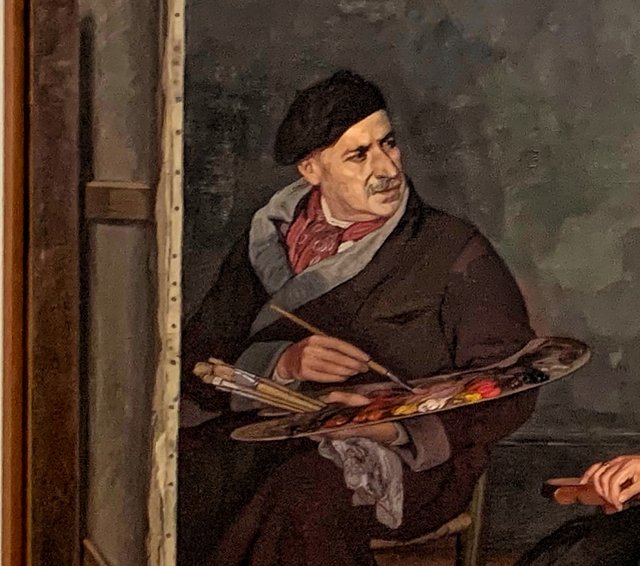

En estos días, está teniendo lugar una exposición excepcional en el Museo de Bellas Artes de Bilbao. Trata sobre Ignacio Zuloaga y en ella se ha conseguido reunir 95 de sus obras. Sin dudarlo, pensé que era una ocasión excelente para conocer mas a fondo a este magnífico pintor.
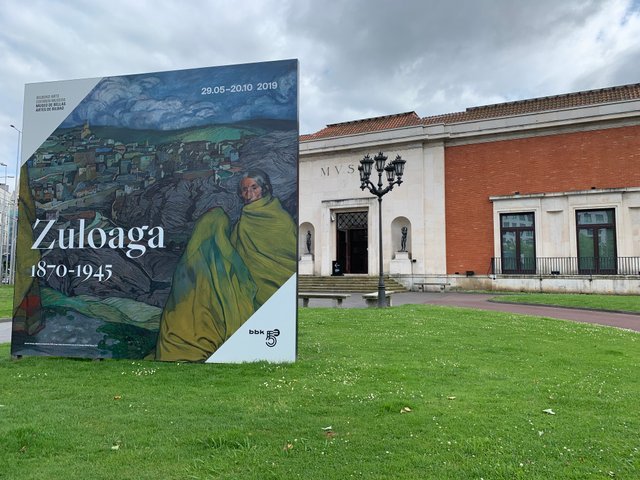
Hace unos años tuve ocasión de admirar de cerca su obra. Fue en la Fundación Mapfre de Madrid, en diciembre 2017. Recuerdo que sus pinturas me impactaron por su fuerza.
Zuloaga realizó una pintura costumbrista que buscó llamar la atención del observador. He reflexionado sobre lo que me conmueve de sus cuadros. Creo que me atrae la atención porque sus obras tienen algo que no encaja. No sé el qué. Hay una crítica o velada ironía en sus cuadros, pero no es fácil descubrir el enigma. En su pintura formal y oscura, algo no cuadra con la realidad. La esencia es distinta de la existencia.
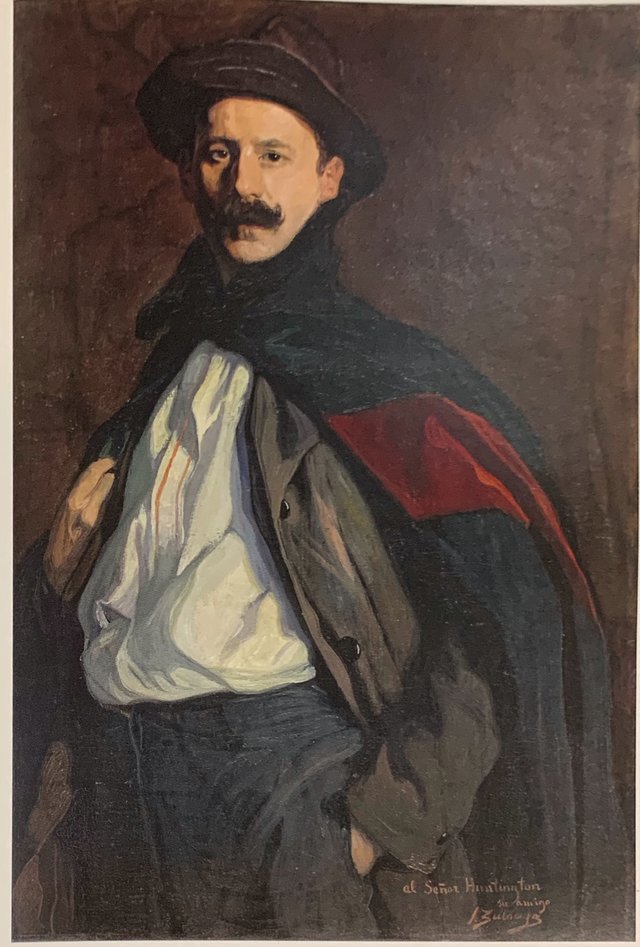
Zuloaga fue un pintor vasco (Eibar, 1870-1945). Aunque inicialmente vivió y comenzó su andadura como pintor en Paris, volvió a España y quedó impactado con Segovia y las provincias castellanas.
Al inicio de la exposición, observé que en sus primeros cuadros, ya desde joven, su dibujo era muy perfilado, como la pintura japonesa. Este rasgo lo mantuvo durante toda su vida inalterado.
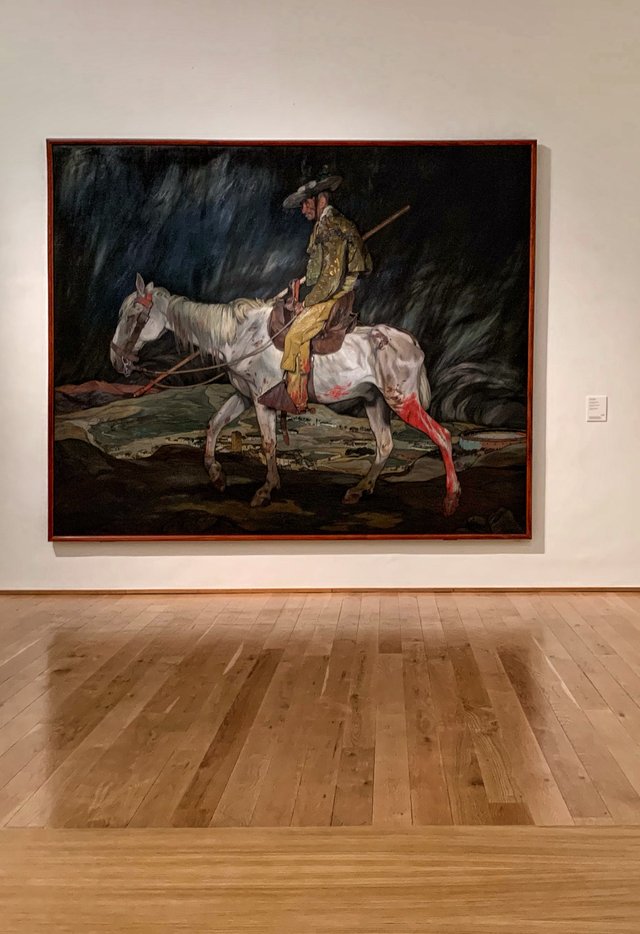
Segovia le inspiró un escenario genuinamente español. Zuloaga quiso ser continuador de la tradicional pintura española inspirándose en Velázquez, Rivera y Goya. Plasmó un mundo rural compuesto de personajes enjutos, delgados, austeros que hoy todavía resaltan más, ya que vivimos englobados en la epidemia actual de sobrepeso y obesidad.
La pintura de Zuloaga es muy oscura, quizás porque quiso plasmar esa España Negra intolerante y conservadora, atada a tradiciones arcaicas. 500 años después de los Reyes Católicos, parecía no haber cambiado nada.

Zuloaga tuvo la fortuna de conocer en vida un éxito rotundo. Destacó especialmente en dos aspectos. Por un lado fue un extraordinario retratista, muy demandado por la sociedad burguesa y pudiente, lo que le aseguró un buen sustento económico. Pero, también triunfó, desde un primer momento, como pintor costumbrista centrado en la estética tradicional española.
A finales del siglo XIX y principio del XX, España era un lugar muy pintoresco. Este país resultaba un lugar exótico por sus curiosas costumbres. España estaba de moda. Como ejemplo, en 1875 se había estrenado la ópera “Carmen” compuesta por Bizet y ambientada en lo español. A mucha gente le interesaban los personajes retratados por Goya. Esas mujeres ataviadas con sus mantillas, peinetas y abanicos resultaban interesantes en Europa y America. A la gente, le llamaba mucho la atención las corridas de toros y lo flamenco. Éstos personajes tan estereotípicos de España causaban mucho interés en el resto del mundo.
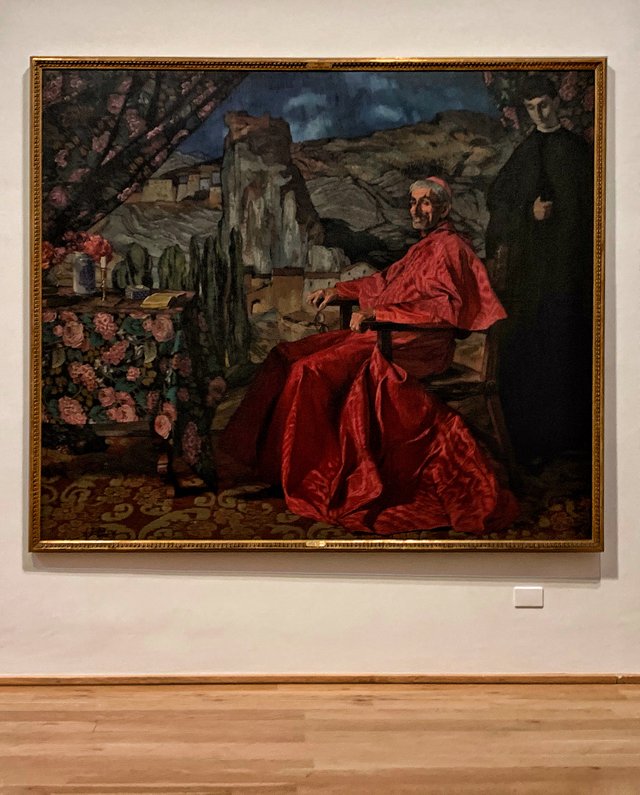
Zuloaga se nutrió de este filón que le sirvió de inspiración al realizar sus pinturas. Cuando regresó de Paris y se instaló en Segovia, conoció la Castilla mas auténtica y se sintió muy motivado por estos temas que triunfaban en Francia. Ya en el país galo se había sentido muy atraído por aquellos personajes humildes que vivían en malas condiciones. La vida rural precaria de Segovia parecía predestinada a ser plasmada por su paleta. Encontró personajes muy auténticos a los que la modernidad aún no había contaminado. Por ello, en su pintura, destacó las costumbres tradicionales y religiosas españolas.
En aquella época, eran muy demandados los estereotipos de la España auténtica, arcaica y rural. Por eso, pintó personajes de la tauromaquia. Pero no plasmó a los personajes triunfadores sino que se centró en los currantes y asalariados. Los que sufrían los embates de la miseria y sobrevivían con estrecheces en el mundo del espectáculo taurino.
Mientras triunfaba en el extranjero, en España fue criticado porque se le acusó de ahondar en la crisis nacional que vivió España tras las perder las últimas colonias en 1898. No gustó que realizara composiciones tristes y oscuras de una nación en crisis que había perdido definitivamente su liderazgo mundial.
Zuloaga también destacó como retratista y en este sentido tuvo una gran rivalidad con el gran pintor valenciano, Joaquín Sorolla. Pero ambos son extremadamente opuestos. Mientras el valenciano pintaba la luz, el vasco parecía pintar la oscuridad.
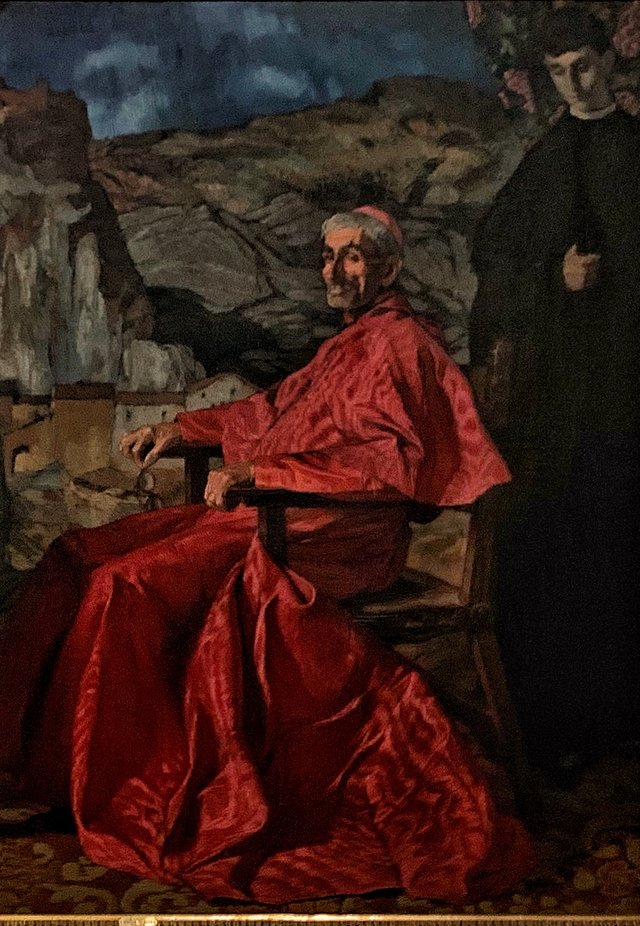
Zuloaga plasmó una religiosidad exacerbada en una España aldeana y rural. El cuadro del cardenal resulta patético. El religioso está tan famélico que no sería extraño descubrir que hubiera elegido como modelo a un pobre mendigo.
En el cuadro, destaca el color de sus ropas realizadas con todo detalle. Me llamó mucho la atención, como el vasco consiguió los brillos de la seda. A base de pinceladas paralelas, realizó los brillos y texturas del tejido. El cardenal, sentado en un sillón, destaca sobre un sombrío y sórdido fondo. Frente a él hay un colorido mantel y las cortinas también floreadas. Mirando sus rasgos faciales, no parece el hábitat natural de este personaje rancio y triste. Hay una crítica velada. Algo no encaja.
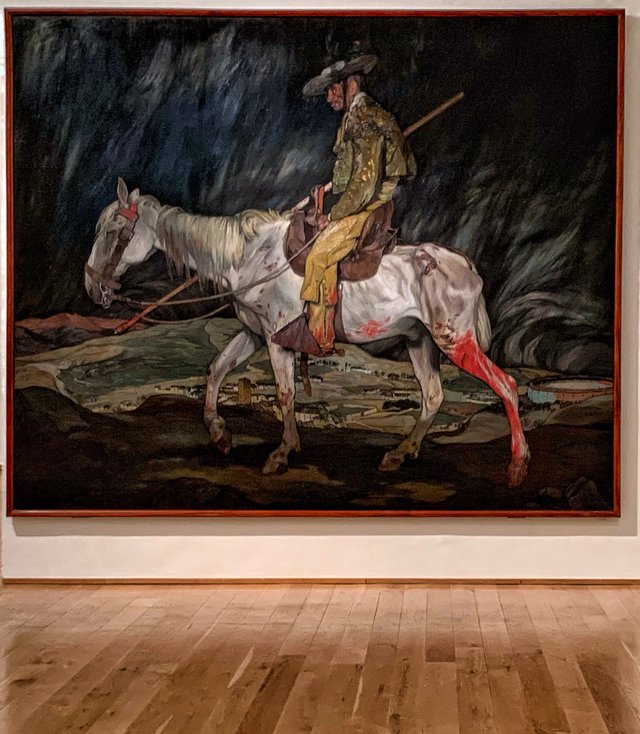
Uno de los cuadros que más me impresionó fue el del picador que vuelve de la plaza sobre un caballo manchado de sangre y heces. El pobre aninal ha sobrevivido al lance pero, a pesar de ello, todavía debe cargar con el lancero para retornar a las cuadras. No hay piedad en este mundo. Ambos son esclavos del espectáculo taurino y de un país que se evade en una fiesta nacional llena de muerte y asco.
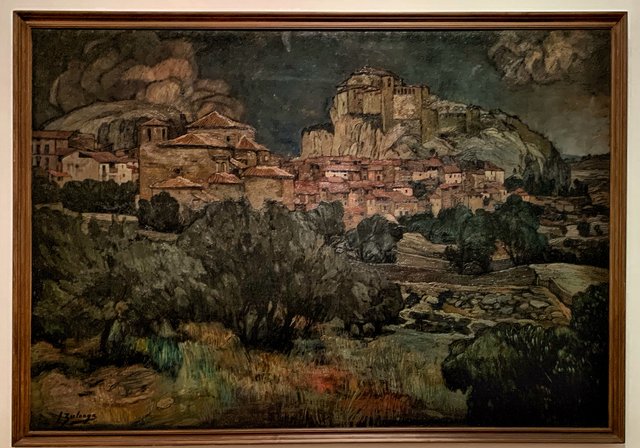
Zuloaga también pintó paisajes. Para su elaboración realizaba fotografías y luego las reinterpretaba en su estudio.
En los retratos femeninos prestó una especial atención a los detalles de la ropa y los complementos.
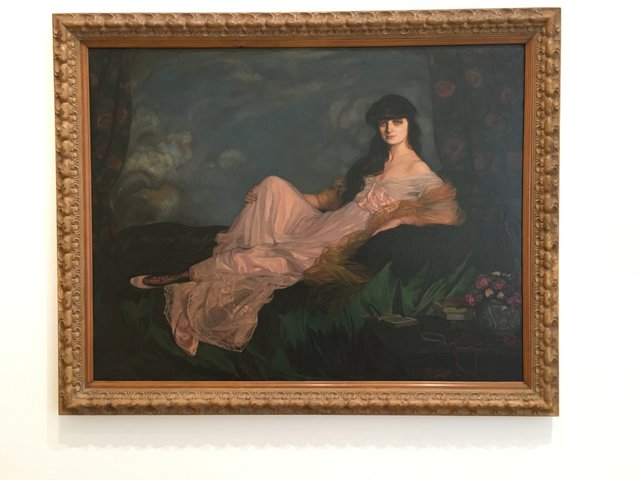
Entre todos los retratos de la exposición, para mí, destaca especialmente el de la poetisa Mathieu de Noailles.
La mujer está peinada con un enorme flequillo y para comunicar con el espectador, la retratada nos dirige la mirada. Tiene un efecto curioso, pues nos sigue con la mirada. Además sonríe con ironía, recordándome a la Mona Lisa de Leonardo da Vinci.
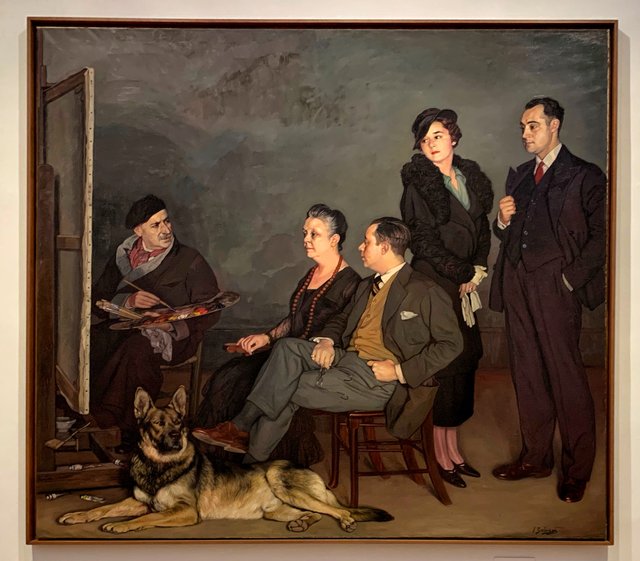
Otro cuadro muy interesante es el retrato de la familia de Zuloaga. La pintura tiene una clara relación con las Meninas de Velázquez. Para ahondar más en la equivalencia, coloca al pastor alemán en primer plano y él se sitúa en la misma posición en la que Diego Velázquez lo hizo en su cuadro.
Zuloaga está pintando su mujer y sus hijos. El pintor dirige su mirada inquisitiva a su pareja sentada. Esta extrañado, no la entiende. Su esposa tiene una actitud hierática e impasible, de completa frialdad. No parece haber empatía entre ellos. Sin embargo, con el joven varón creo entender que hay una relación especial, una interconexión muy clara. Atrás, los otros dos hijos parecen ir cada uno a sus propios intereses. La joven parece más interesada en su propia belleza, mientras que el joven parece responder a sus propias empresas y negocios, quizás familiares.
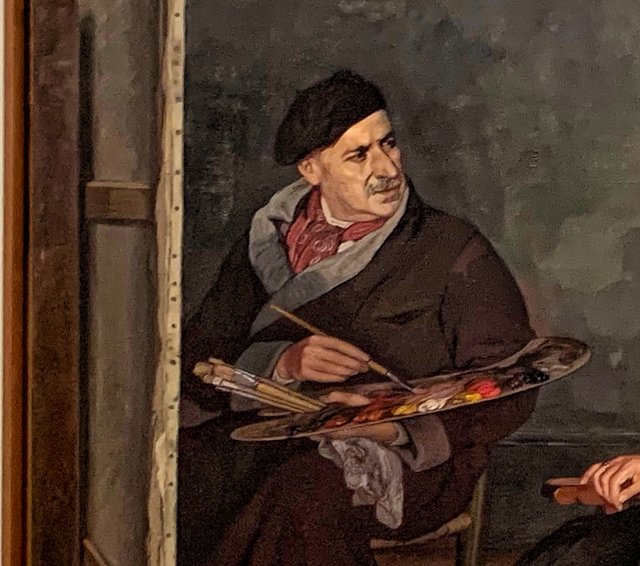
Finalmente, me llamó mucho la atención, la disposición de los colores en la paleta de Zuloaga. No es habitual poner en el centro el color blanco junto a los amarillos y ocres. Supongo que es era su gusto personal. Como hacía Goya, es mas clásico poner los colores en una graduación continua empezando por el blanco y terminando con el mas oscuro en el otro extremo.
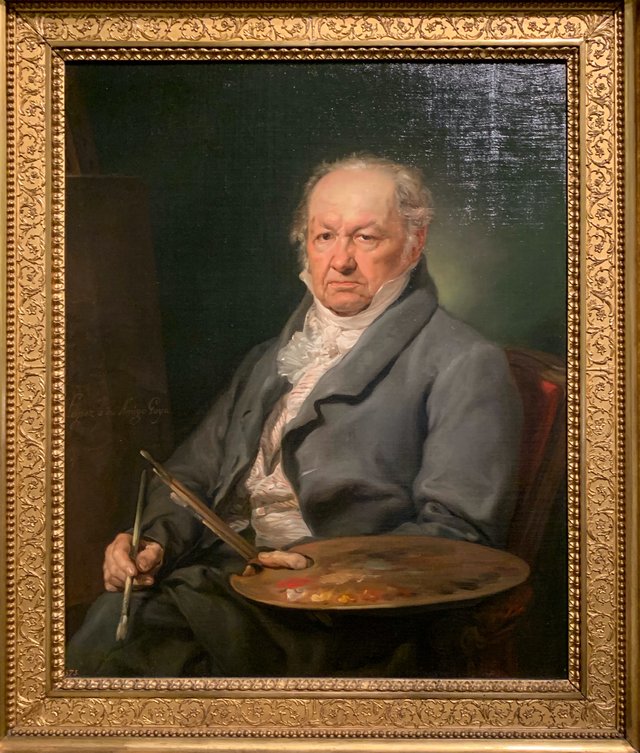
Estuve un buen rato fijándome en ese detalle y también en que Zuloaga tiene tirados por el suelo los tubos de pintura, quizás autocriticando su desorden. También, el pintor se retrata muy abrigado, cubierto con una gruesa capa y un pañuelo en el cuello. Seguramente su posición estática y sentada en Segovia le hacía pasar mucho frío.
Este es el resumen de la exposición que me resultó muy agradable, puesto que pude disfrutarla en tranquilidad y fijándome parsimonioso en los detalles. Espero haberos podido plasmar mis sensaciones y os agradezco haberme acompañado. Hasta pronto.

These days, an exceptional exhibition is taking place at the Bilbao Fine Arts Museum. It deals with Ignacio Zuloaga and it has managed to gather 95 of his works. Without hesitation, I thought it was an excellent opportunity to learn more about this magnificent painter.
A few years ago I had the opportunity to admire his work closely. It was at the Mapfre Foundation in Madrid, in December 2017. I remember that his paintings impressed me with their strength.
Zuloaga made a costumbrista painting that sought to attract the attention of the observer. I have reflected on what moves me in his paintings. I think it attracts my attention because something does not fit. I do not know what. There is a criticism or veiled irony in his paintings, but it is not easy to discover the enigma. In his formal and dark painting, something does not square with reality. The essence is different from existence.
Zuloaga was a Basque painter (Eibar, 1870-1945). Although he initially lived and began his career as a painter in Paris, he returned to Spain and was impressed with Segovia and the Castilian provinces.
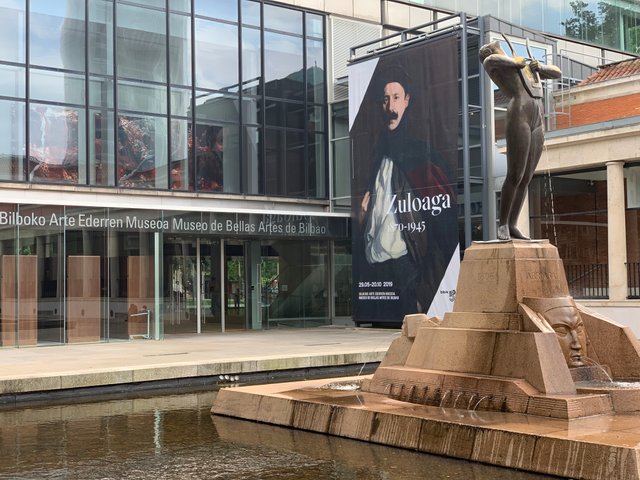
At the beginning of the exhibition, I noticed that in his early paintings, from a young age, his drawing was very sharp, like Japanese painting. This trait kept him throughout his life unaltered,
Segovia inspired a genuinely Spanish scenario. Zuloaga he wanted to be a continuator of the traditional Spanish painting inspired by Velázquez, Rivera and Goya. He created a rural world made up of lean, thin, austere characters that today stand out even more, as we live in the current epidemic of overweight and obesity.
Zuloaga's painting is very dark, perhaps because he wanted to capture that intolerant and conservative Black Spain, tied to archaic traditions. 500 years after the Catholic Monarchs, it seemed to have changed nothing.
Zuloaga had the fortune of knowing in life a resounding success. He stood out especially in two aspects. On the one hand he was an extraordinary portraitist, much in demand by bourgeois and wealthy society, which assured him a good economic sustenance. But, he also triumphed, from the start, as a costumbrista painter focused on traditional Spanish aesthetics.
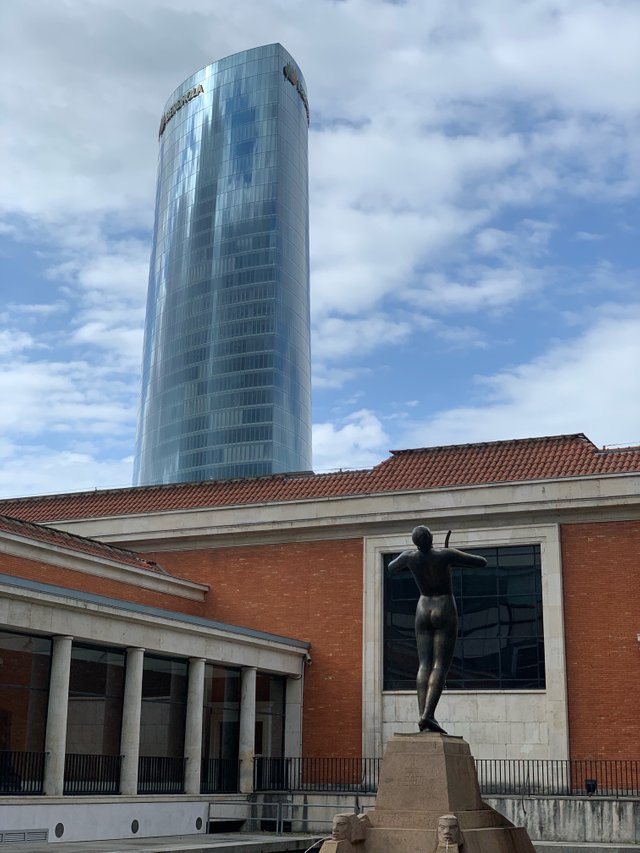
At the end of the 19th century and the beginning of the 20th, Spain was a very picturesque place. This country was an exotic place because of its curious customs. Spain was fashionable. As an example, in 1875 the opera "Carmen" composed by Bizet and set in the Spanish language had been released. Many people were interested in the characters portrayed by Goya. Those women dressed in their mantillas, combs and fans were interesting in Europe and America. To the people, the bullfights and flamenco were very popular. These stereotypical characters of Spain caused much interest in the rest of the world.
Zuloaga was nourished by this reef that inspired him when he made his paintings. When he returned from Paris and settled in Segovia, he met the Castilla more authentic and was very motivated by these issues that triumphed in France. Already in the Gallic country he had felt very attracted to those humble characters who lived in bad conditions. The precarious rural life of Segovia seemed destined to be shaped by its palette. He found very authentic characters to whom modernity had not yet contaminated. For this reason, in his painting, he highlighted the traditional Spanish and religious customs.
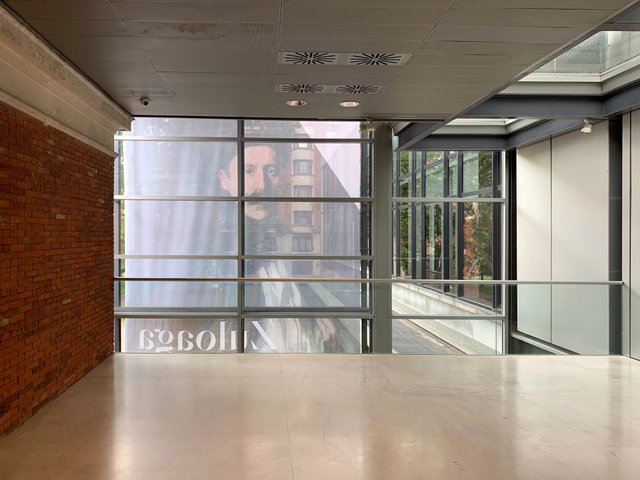
At that time, the stereotypes of authentic, archaic and rural Spain were very demanded. That is why he painted bullfighting characters. But did not capture the winning characters but focused on the hardworking and salaried. Those who suffered the ravages of misery and survived with hardships in the world of bullfighting.
While he triumphed abroad, in Spain he was criticized because he was accused of deepening the national crisis that Spain experienced after losing the last colonies in 1898. He did not like that he made sad and dark compositions of a nation in crisis that had definitively lost its world leadership.
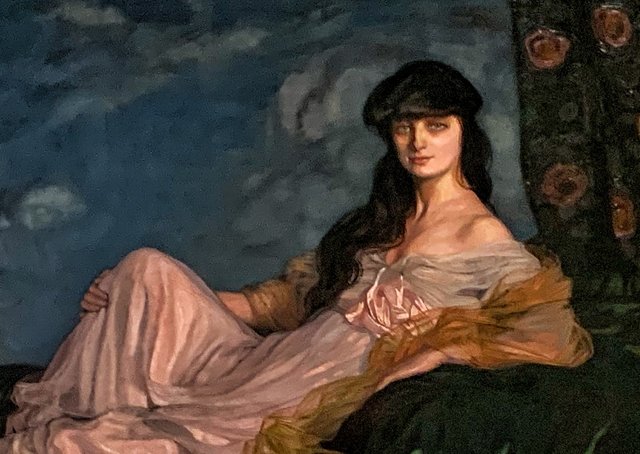
Zuloaga also stood out as a portrait artist and in this sense he had a great rivalry with the great Valencian painter, Joaquín Sorolla. But both are extremely opposed. While the Valencian painted the light, the Basque seemed to paint the darkness.
Zuloaga captured an exacerbated religiosity in a rural and rural Spain. The cardinal's picture is pathetic. The religious is so famished that it would not be strange to discover that he had chosen as a model a poor beggar.
In the painting, he highlights the color of his clothes made in detail. It caught my attention, as the Basque got the glitter of silk. Based on parallel brushstrokes, he made the shines and textures of the fabric. The cardinal, seated in an armchair, stands out against a dark and sordid background. In front of him there is a colorful tablecloth and the curtains also flowered. Looking at his facial features, it does not seem like the natural habitat of this stale and sad character. There is a veiled criticism. Something does not fit.
One of the paintings that most impressed me was that of the picador who returns from the square on a horse stained with blood and feces. The poor animal has survived the haul but, despite this, he must still carry the lancer to return to the stables. There is no mercy in this world. Both are slaves of the bullfighting show and of a country that evades in a national party full of death and disgust.
Zuloaga also painted landscapes. For his elaboration he made photographs and then he reinterpreted them in his studio.
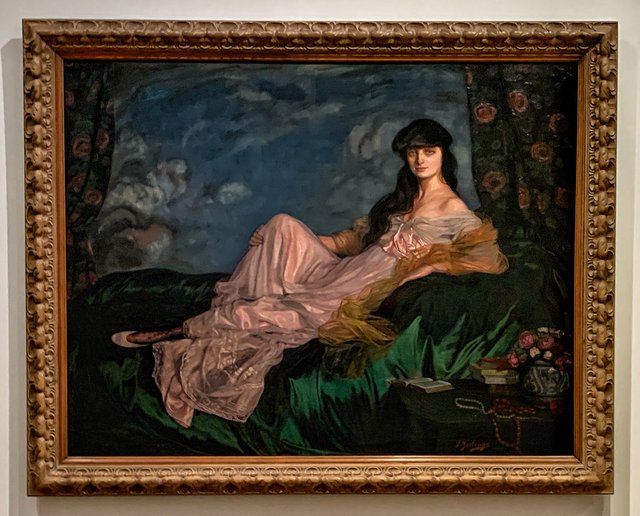
In the female portraits he paid special attention to the details of the clothes and accessories.
Among all the portraits of the exhibition, for me, especially stands out that of the poet Mathieu de Noailles.
The woman is combed with a huge fringe and to communicate with the viewer, the portrayed one directs us the look. It has a curious effect, because it follows us with the look. He also smiles wryly, reminding me of Leonardo da Vinci's Mona Lisa.
Another very interesting picture is the portrait of the Zuloaga family. The painting has a clear relationship with Las Meninas de Velazquez. To delve deeper into equivalence, he places the German shepherd in the foreground and he stands in the same position in which Diego Velázquez did it in his painting.
Zuloaga is painting his wife and children. The painter directs his inquisitive gaze to his seated partner. He is surprised, he does not understand her. His wife has a hieratic and impassive attitude, of complete coldness. There seems to be empathy between them. However, with the young man I think I understand that there is a special relationship, a very clear interconnection. Back, the other two children seem to go each to their own interests. The young woman seems more interested in her own beauty, while the young man seems to respond to his own businesses and businesses, perhaps family.

Finally, I was very struck by the arrangement of the colors in the Zuloaga palette. It is not usual to put the white color in the center next to yellows and ochres. I guess that is was his personal taste. As Goya did, it is more classic to put the colors in a continuous graduation starting with the white and ending with the darkest one at the other end.
I spent a long time looking at that detail and also that Zuloaga has the paint tubes lying on the floor, perhaps self-criticizing his disorder. Also, the painter portrays himself very warm, covered with a thick cloak and a scarf around his neck. Surely his static position and sitting in Segovia made him very cold.
This is the summary of the exhibition that I found very pleasant, since I was able to enjoy it in tranquility and paying close attention to the details. I hope I have been able to express my feelings and I thank you for having accompanied me. See you soon.

Pintores célebres
En este nuevo proyecto, pretendo reflejar mis comentarios sobre las exposiciones a las que asisto. De esta manera, puedo compartir lo que aprendo y difundir, en cierto modo, la cultura. También, con mis publicaciones puedo darle algo de publicidad a un evento cultural que quizás pueda tener un interés global. Espero que os guste.
Famous painters
In this new project, I intend to reflect my comments on exhibitions that I attend. In this way, I can share what I learn and spread, in a certain way, the culture. Also, with my publications, I can give some publicity to a cultural event that, perhaps, may have a global interest. I hope you like it.

Bibliografía/Reference

Cómo lo hago
Hice las fotografías con mi iPhone X. Para la edición utilicé la aplicación Snapseed y para la firma digital usé la App Watermark.
Los dibujos los hice en el iPad con el programa Sketches.
For the photography I use my iPhone X. For edition I use the Snapseed application and for the digital signature the Watermark app.
Everything I did on my mobile phone, I did not use the computer at all.
For the drawings, I use the Sketches program and paint them on the tablet.
Si quieres ver como lo hago, visualiza estos tres enlaces de publicaciones previas.
If you want to see how I do it, visualize these three links from previous publications.


Original design for @talentclub de @carlos-cabeza
Las fotos son mías y originales. También, soy el autor del dibujo separador.
¡Espero tus comentarios!
The photos are originals and mine. Also, I am the author of the separator drawing.
I await your comments.
¡Buen Camino!
Muy buen post, es un gran pintor, me hace pensar un poco en los retratos de Goya por ese lograr captar la esencia de las personas, sus vidas en un gesto, una mirada, muy bueno en verdad, abrazos.
Recientemente pude hacer una fotografía del autorretrato de Goya y la muestro en la publicación. Así se puede comparar la distribución de los colores que cada uno tenía en la paleta. Son curiosos los diversos gustos de los pintores...
Posted using Partiko iOS
Este paseo realmente lo disfruté así como tu detallado análisis de las obras. Gracias @volcandemorcilla por acercarme a la obra de Zuloaga.
Posted using Partiko iOS